Table of Contents
Part 6: WiFi Antennas Installation (Best Practices)
This part might seem very simple, but it is trickier than you think. Banana Pi company provides a rater short wifi antenna wires ( 18 cm) that can limit the installation of the antennas. Because they are very short, you can’t use them beneath the Banana Pi R3 board. If you are using a heat sink of any sort, it will be significantly limiting to place them on top of the board, not to mention the heat coming from the heat sink and other components. We solved this problem by ordering four 30 cm SMA Male-type Pigtail cable wires from AliExpress.
Before: Passing the Antenna wires on top of the R3 Board

After: Passing the Antenna wires under the R3 Board
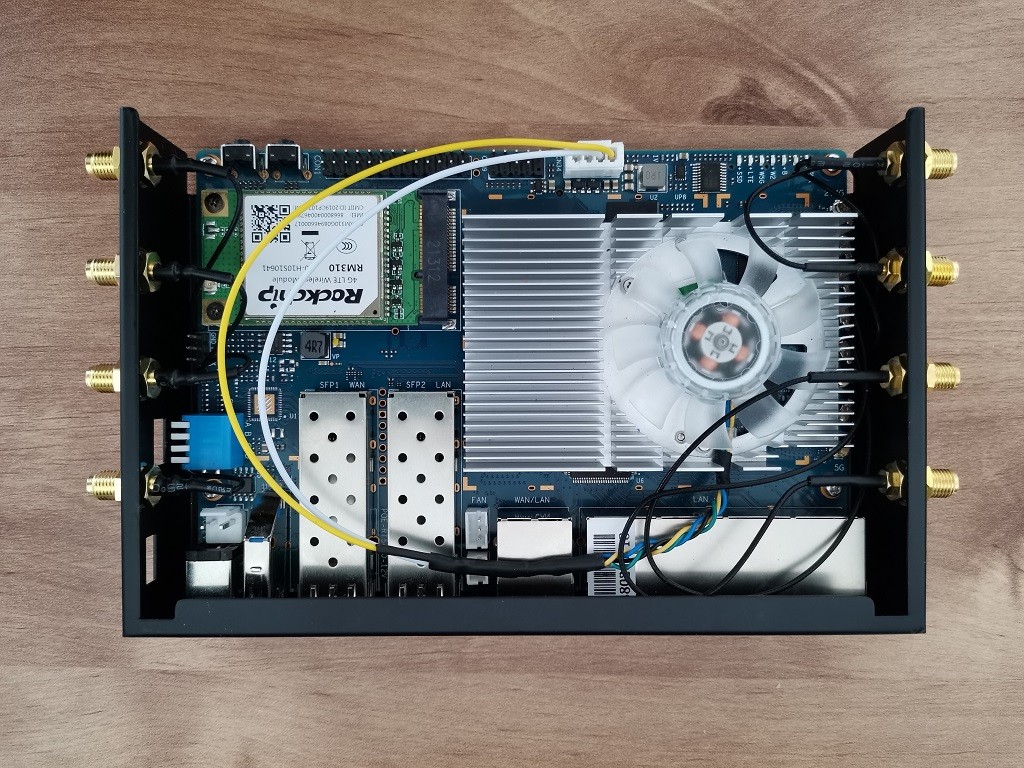
Antennas Arrangement & Installation
The Banana Pi R3 comes with eight WiFi Antennas. In our installation, we picked the rear side where the 5G and 2.4G antennas are assembled. As for the six antennas, we Assembled them randomly without any specific installation order. Lastly, If you add Mini Pcie Module 4G LTE Module Card, it’s possible to pass the Bluetooth and WiFi wires outside the Case through a small rectangle-shaped cut you can find on the corner of the Case.
2.4G and 5G Antenna Arrangement

Installation tips!
- Use two Nuts to fasten each antenna (each on every side) This will help to secure the antenna and prevent any unnecessary rotation against the antenna hole.
- As mentioned above, we used longer (30CM) Antenna wires. This way, we passed all the wires beneath the Banana Pi R3 board. You can also consider buying RG178 wires that are more durable and temperature resistance.
- When running the wires under the Banana Pi R3, you can use heat shrink tubes to help organize and protect the cables.
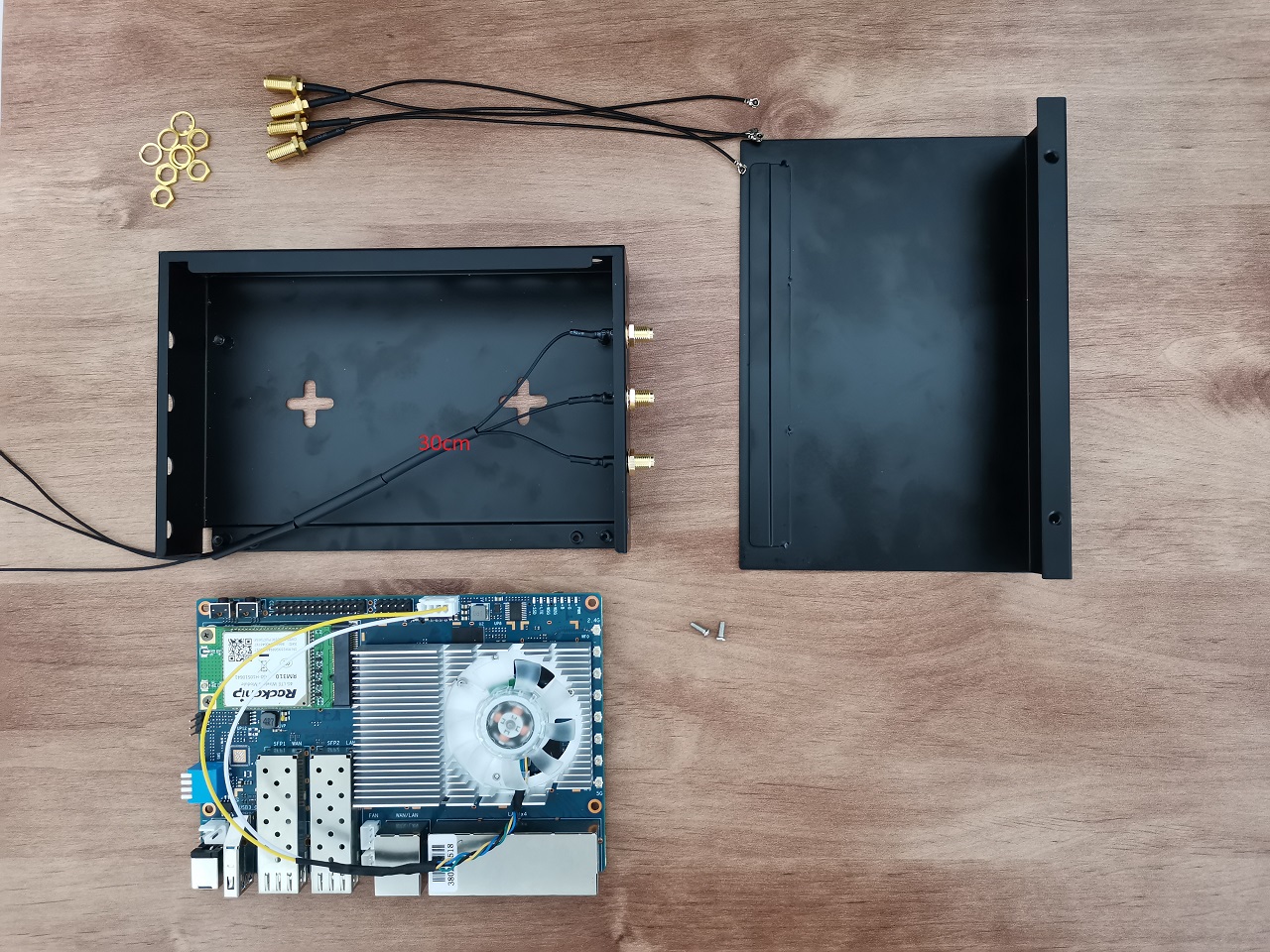
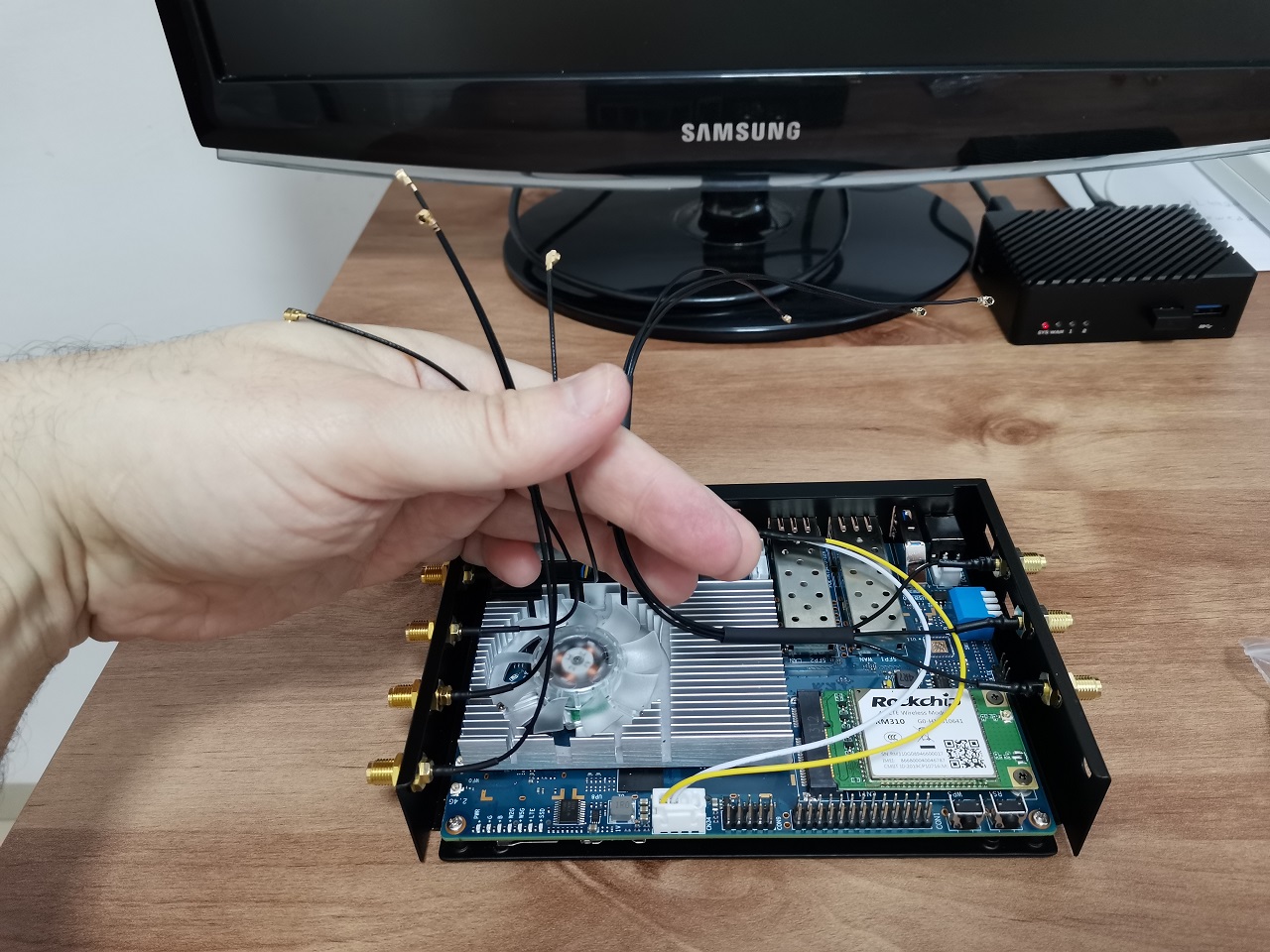
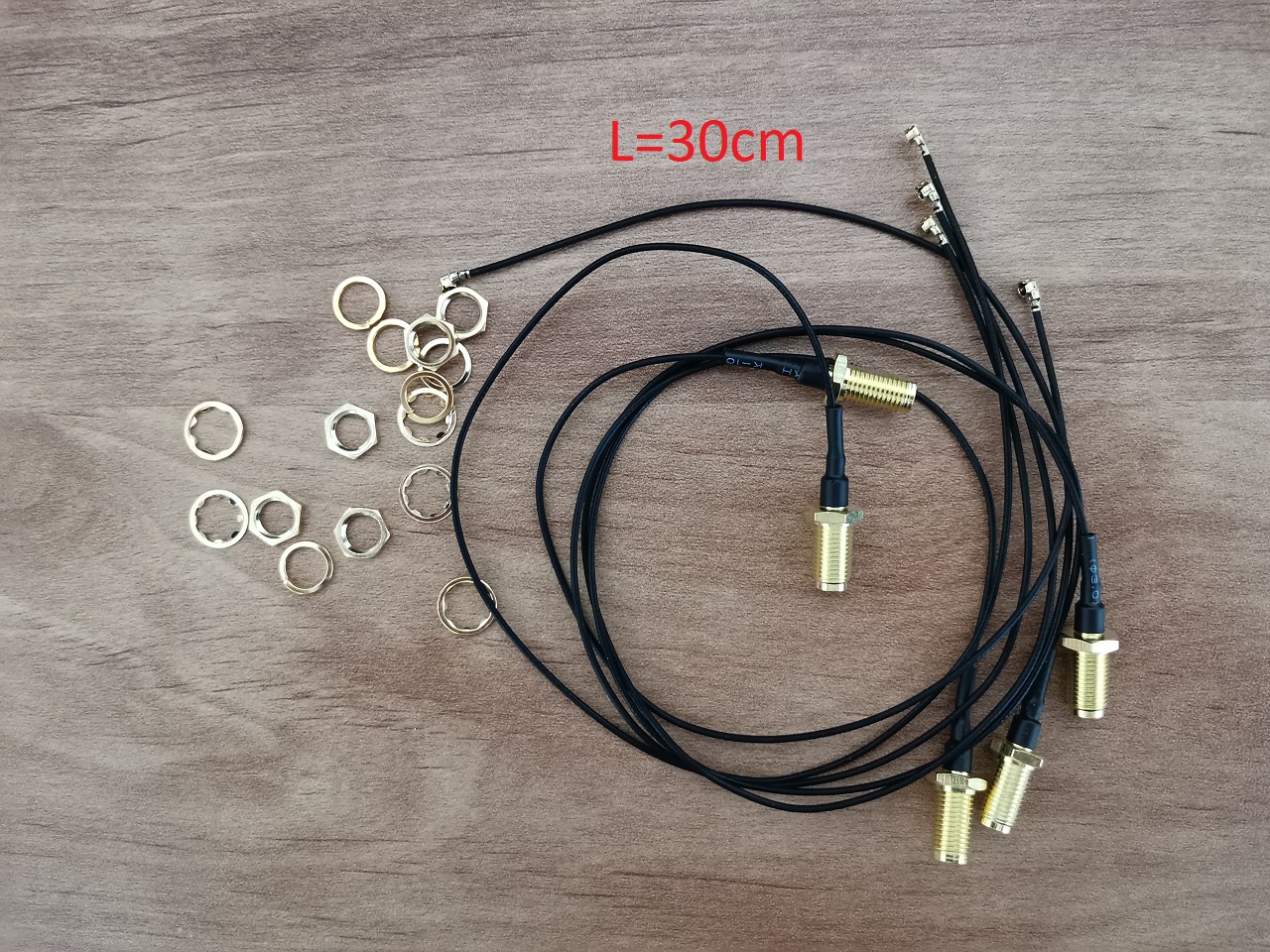
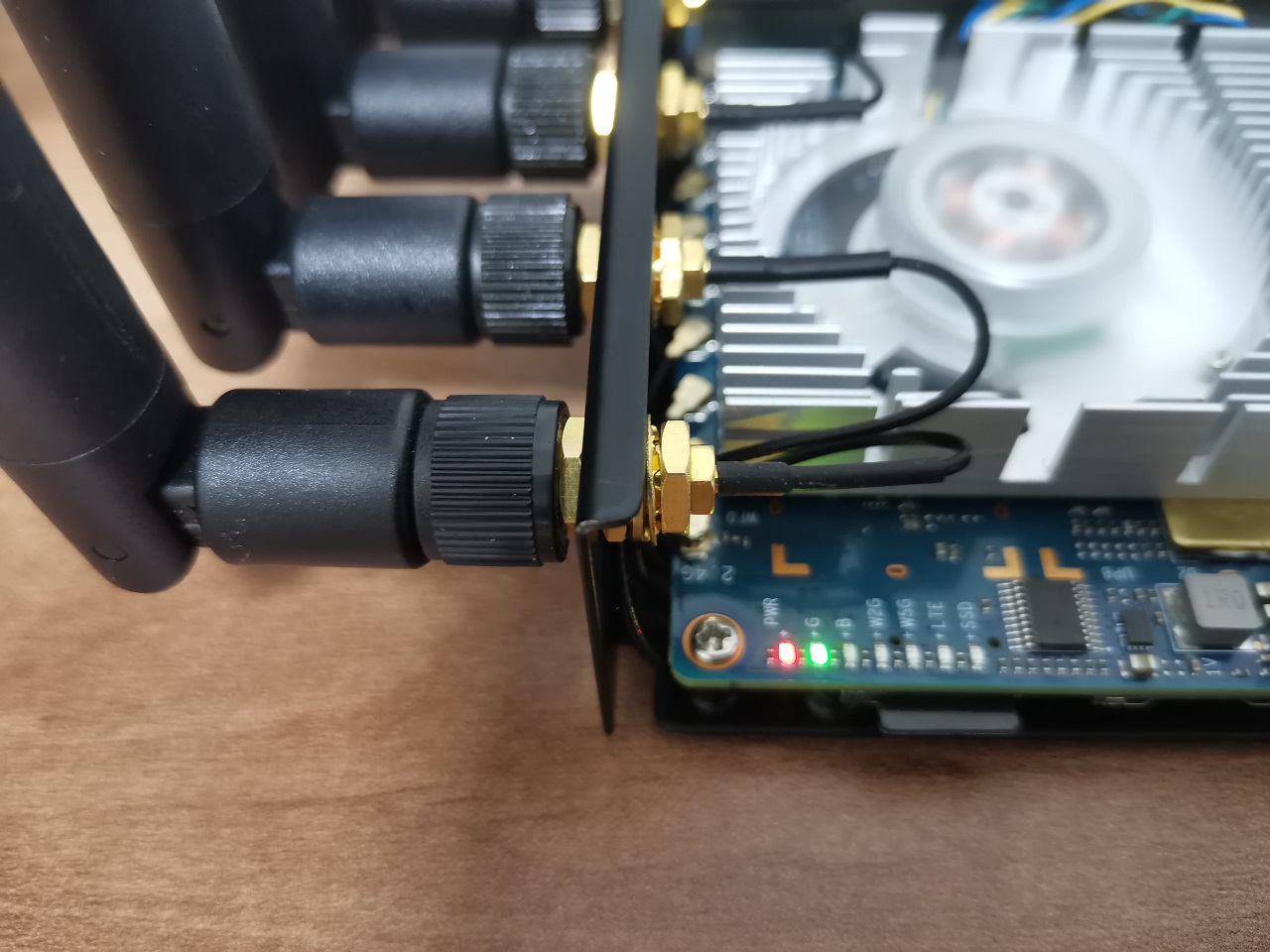

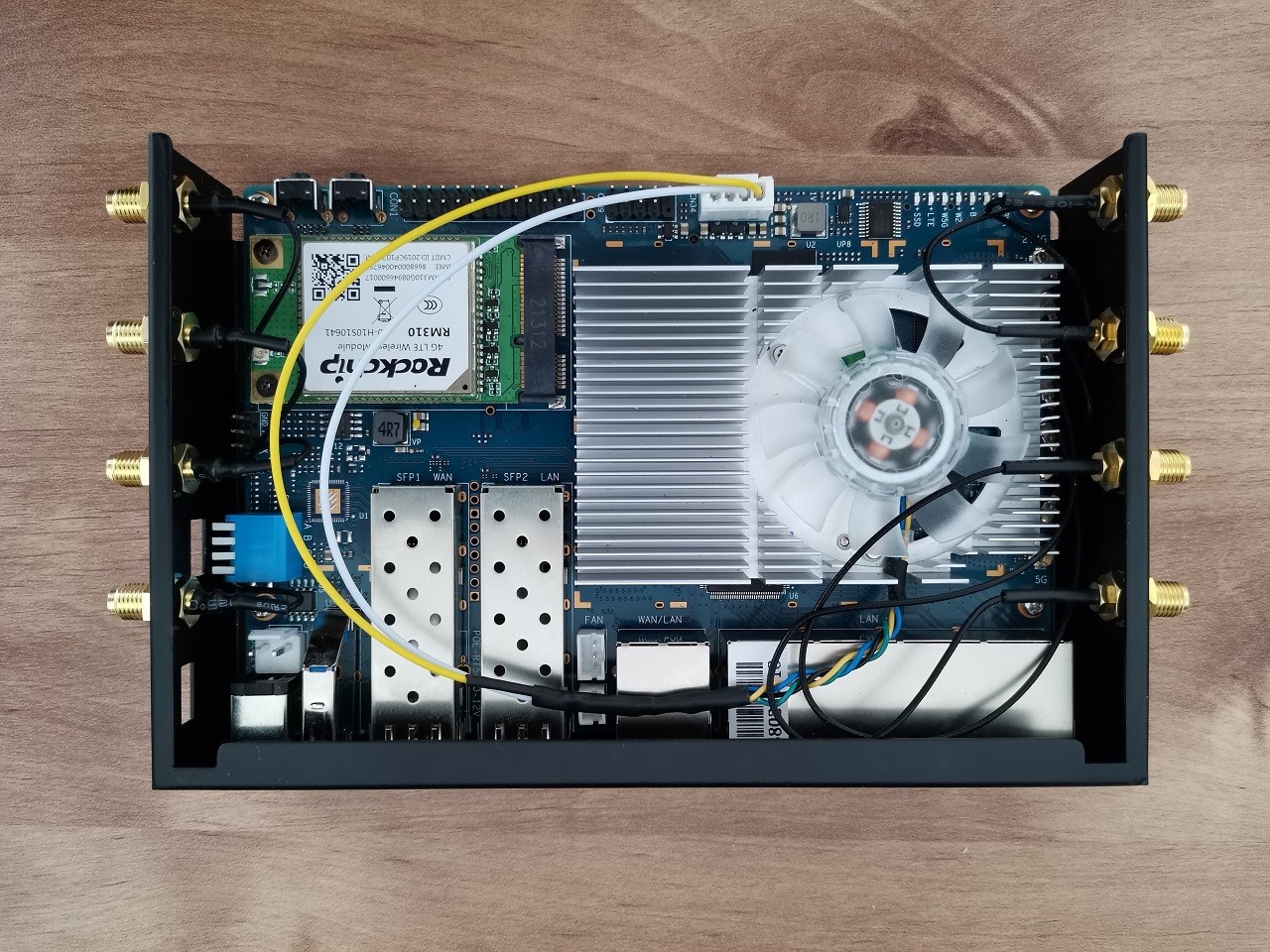
Installing a Wi-Fi 6E Expansion Network Card
If you are not satisfied with your Wifi performance and would like to explore the 6GHz Band option, there is also the option to install a WiFi & BT expansion card. We recommend using a MediaTek-based chip-based card along with an M.2 adapter. Currently, all eight WiFi antennas are assembled for use. It’s possible to use external dual antennas with a simple mounting base and pass both wires through one of the case holes. We provided a list of all the necessary items, including the cables that connect to the existing antenna SMA connectors.
 | |||
WiFi&BT Expansion Card Install (Items list) | |||
Item No' | Description | QTY | Buy Links |
1 | Pigtail Antenna Cable Adapter with RP SMA Female (RG178) | 2+ | |
2 | External Antennas+ Base | 1 | |
3 | Wi-Fi 6E MT7922 Netwok Card (A+E Key) | 1 | |
4 | M.2 (NGFF) Key A+E Adapter | 1 | |
AndroidPIMP.COM will not be liable or responsible for any loss or damage caused by improper wiring/assembly of the above components.
| |||

When you do recommend installing a passive (or active) heat sink to this setup? Passive cooling is I think a no brainer, it’s cheap and silent. Strange they don’t add passive heat sink to their package product, as part of the package.
“Strange they don’t add passive heat sink to their package product, as part of the package”.
They had some supply problems because of COVID.
If you have a large heatsink that will fit and cover all chips, it might be worth trying the passive cooling option. Just use a lower in height so you have the option to add a fan.
I just noticed that the “complete kit” also comes with heat sinks. Seperate heatsinks for each chip. If you buy a large heatsink, that will work as well, BUT keep in mind that the chips have different heights, meaning you should use different heat pads (1.5 mm and 0.5 mm) to have a good coverage of the heat sink on the different chips. I did read about performance issues on forum.banana-pi.org forum, when you don’t cool the chips enough. Especially with passive cooling, it might still be a good idea to add additional vent holes manually in the casing. Since… Read more »
So use 1.5-2 mm thermal pads. Nothing will happen. They are elastic, so it does not matter if you are using the highest type for all chips. It’s not rocket science. I agree about the vent holes. You can drill a few holes.. or you can also glue a small fan to the bottom of the case. And maybe use the GPIO header pins as a power source. Just to get the hot air out of the case.
Actually there is a fan header connnector on the R3 board. Which can do PWM.
Kindly Try it, and let me know if it works well.
you can email me with the info. Thanks
Ps. also add a link to the package deal of the Banana Pi BPI-R3? https://www.aliexpress.com/item/1005004886608696.html.
Since you mentioned the single board computer only on your last page.
Thanks. I added the link for the complete kit.
Which version of PCIe does the board support?
According to MediaTek website >> M.2 M-Key PCIe interface (2-lane PCIe 2.0)
Is there any nas software or docker image that will handle those multiple hdds ? Exampme if i want to raid, zfs or btrfs
1) OpenWrt has NAS support.
2) You can also try CasaOS.
3) OpenMediaVault should run on Debian.
I don’t get what is about the ONTi SFP. It is suposed to be a GPON ONT? In aliexpress I see that it comes in pairs (Tx 1310 and Rx 1550 the first one and other with Tx 1550 and 1310), like a pair which is meant to be connected together.
https://es.aliexpress.com/item/4000265957277.html?spm=a2g0o.productlist.main.17.5893oPf4oPf4kf&algo_pvid=54d3e4cb-00c6-4269-8acb-3ae1e2c40f54&algo_exp_id=54d3e4cb-00c6-4269-8acb-3ae1e2c40f54-8&pdp_npi=4%40dis%21ARS%217735.49%213867.74%21%21%2122.10%21%21%402132a26216964772264216569ed485%2110000001076765699%21sea%21AR%214647643211%21AB&curPageLogUid=VmCG7Kwqm2TR
This module is not compatible with GPON technology.
If the module information / specifications do not indicate it’s a GPON compliance, then it is safe to say that it is not GPON compliant.
Did you use anything to glue the copper-made sheet plates on chips?
I used a thermal silicone adhesive plaster.